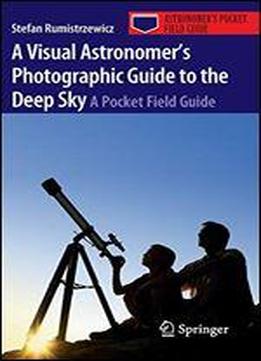
A Visual Astronomer's Photographic Guide To The Deep Sky: A Pocket Field Guide
by Stefan Rumistrzewicz /
2010 / English / PDF
10.6 MB Download
Over the last 15 years or so there has been a huge increase in the popularity of astrophotography with the advent of digital SLR cameras and CCD imagers. These have enabled astronomers to take many images and, indeed, check images as they scan the skies. Processing techniques using computer software have also made developing these images more accessible to those of us who are chemically challenged! And lets face it some of the pictures you see these days in magazines, books, and on popular web forums are, frankly, amazing! So, why bother looking through the eyepiece you ask? Well, for one thing, setting up the equipment is quicker. You just take your scope out of the garage or, if youre lucky enough to own one, open the roof of your observatory, align the scope and off you go. If you have an equatorial mount, youll still need to roughly polar align, but this really takes only a few moments. The imager would most likely need to spend more time setting up. This would include very accurate polar alignment (for equatorial mounts), then finding a guide star using his or her finder, checking the software is functioning properly, and c- tinuous monitoring to make sure the alignment is absolutely precise throu- out the imaging run. That said, an imager with a snug obsy at the end of the garden will have a quicker time setting up, but then again so will the visual observer.











